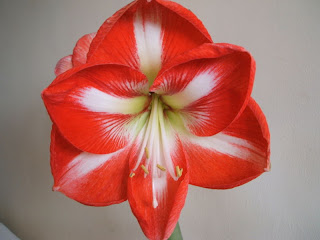Poinsettia plants are everywhere around the holidays but do you know the story behind this festive bloom that is synonymous with Christmas itself? With its bright red, pink, or white "flowers" (which are actually colored leaves called bracts), the poinsettia is the most popular potted plant in the United States with its wholesale contributing over $250 million dollars to the U.S. economy each year.
The poinsettia got its name here from Joel Roberts Poinsett, an American botanist, physician, and diplomat to Mexico who in 1828 sent cuttings to his home in South Carolina. The poinsettia is native to Mexico (its Spanish name translates to "Flower of the Holy Night") where as a wild tropical tree it can reach heights of more than ten feet. The ancient Aztecs called it cuetlaxochitl and used it to make a reddish-purple dye as well as a medicine for fevers.
 One of 2013's holiday season U.S. Postal Service Forever stamps features artwork of the lovely poinsettia. “The image of the poinsettia has proven to be so timeless that the Postal Service has featured it on two previous holiday stamps, one in 1964 and one in 1985,” stated Stamp Services Director Susan McGowan.
One of 2013's holiday season U.S. Postal Service Forever stamps features artwork of the lovely poinsettia. “The image of the poinsettia has proven to be so timeless that the Postal Service has featured it on two previous holiday stamps, one in 1964 and one in 1985,” stated Stamp Services Director Susan McGowan.Typically the plant is for indoors only, as it is sensitive to freezing. In Florida, the poinsettia can be planted outdoors as well. If you have poinsettias that you would like to transfer outside, wait until the weather begins to warm, then bring the pots outside and put in a shady place so they can acclimate.
After a few weeks, plant your poinsettias in full sun in well drained soil and keep in mind that in order to flower they need 14 hours of complete darkness each day for 6 to 8 weeks, so keep away from bright street lamps or other outdoor lighting. Pruning poinsettias after they bloom in spring promotes a fuller plant and in our area you will have a thriving poinsettia if you fertilize it once a month from May to September.
Contrary to what many people have been led to believe, the poinsettia is not toxic to humans or animals. Eating the poinsettia will cause stomach upset and being exposed to the milky sap of the plant can irritate the skin, but the commonly held notion that poinsettias are highly poisonous is an urban legend.
🦚Article by Connie Helena, author of The Green Orchid 🦚







